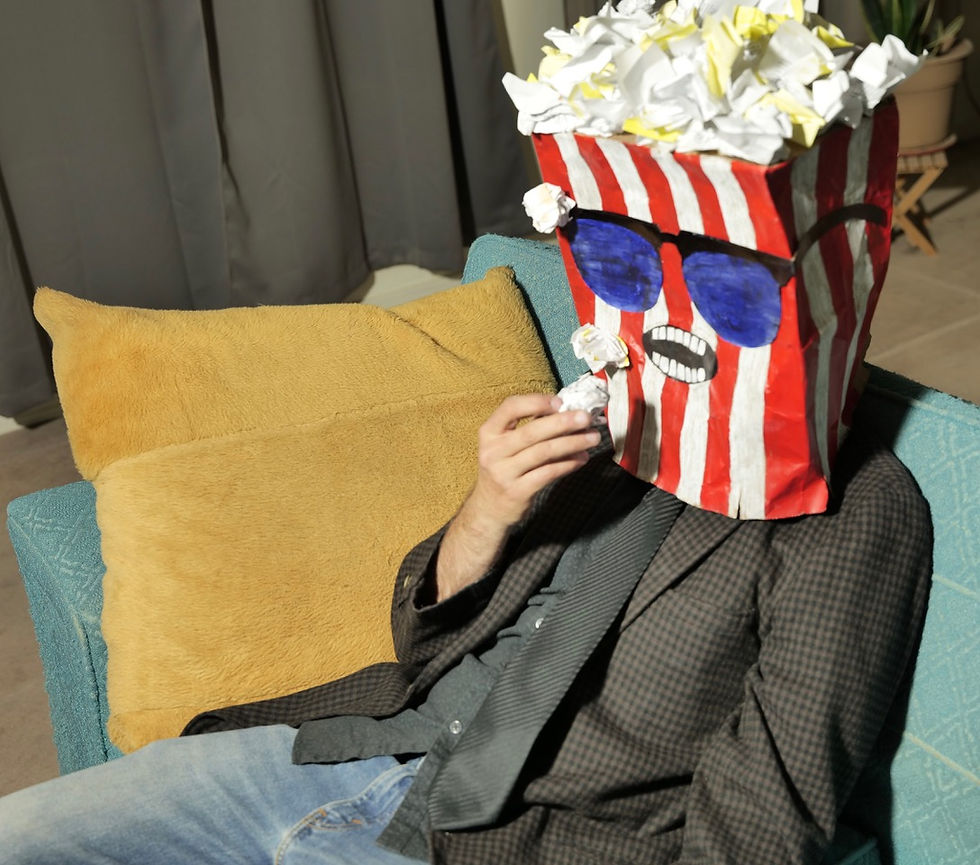Expectations
- Tayo Basquiat
- Apr 10, 2024
- 3 min read
On the Sunday when Christians were celebrating Easter, I was working on a photography assignment, “Color It Red,” making photographs that included something red. I decided this was a perfect opportunity to play and experiment. I started by making the bag mask and then moved on to the lighting, scene setup, trying to figure out the camera’s timer (a remote would have been helpful), and a day later ended up with this photo.

It wasn't quite up to the expectations I had in mind, but I had fun playing and learned a lot.
A few years ago, I took a drawing class at the University of Wyoming. Shelby Shadwell, our teacher, suggested the greatest difficulty faced in drawing is the tendency to draw what we think we see rather than drawing what we see.
When asked to draw a person or a horse, most people will produce a symbolic representation, something we might find on a cave wall or use in the game Pictionary. It’s a shorthand, and our brains know and readily supply details that fulfill the expectations, even if those details aren’t there. These conceptual abstractions are products of the thinking mind rather than acts of perception.
Shelby took us through some exercises designed to help us see. A primary tool is squinting. The resulting blur facilitates perception of the light and shadow, masses and proportions, and, as if by magic, the drawing act changes dramatically, moving away from symbolic imposition and toward seeing. In one exercise, Shelby projected a black and white image on the wall and instructed us to draw what we saw. The first image was very simple with just larger, solid black and white masses. Then he advanced the image and another layer was added, smaller masses, different shades of grey, sometimes an erasure of a portion of a black mass we’d blocked in previously. After several additional slides, our drawings were done, and he instructed us to invert our drawing pads as he simultaneously revealed the last slide. I still remember my amazement seeing that I’d rendered a very realistic scene of dairy cows grazing a pasture, needing only refinement in a few details from the final slide. If the teacher had said, “Tayo, draw a pasture with dairy cows,” I might have said, “I can’t,” or I would have drawn a representation or what I thought such a scene was expected to look like.
My photography class at UNM Continuing Education is ending this Saturday. We’ve been working on “seeing” this whole time, aiming attention at shadow and light, changing our position, and for me, being more playful and imaginative. The instructor, Tim Anderson, loaned me a book by David duChemin titled, A Beautiful Anarchy, where I found this wonderful encapsulation of what I’ve learned in the course:
“As a photographer, my art doesn’t come from the camera. It comes when I’m open and receptive enough to life that I see moments for what they are instead of what I wish them to be. There’s a kind of humility towards life that is necessary, a willingness to suspend my own expectations of what will happen, and watch it as it unfolds. The expectations and sense of what should happen only blind me to what is. The more I let go, the more I see, and with greater clarity when not seen through the filter of those expectations.” (160)
Because life and art are one in the same for me, it’s not a big leap to acknowledge the ways my expectations for people or situations blind me or prevent my seeing what’s there. I admit I’m often caught up in this type of wishful thinking, which is also a type of sadism, aka, the desire to control. If only I could let go, stop trying to fix or change someone, take the risk of not being prepared, of being surprised. Why the desire to control? Why manufacture these expectations at all?
Squint. Take the filter or “glasses” off. Turn the image upside down. Seeing what’s there instead of seeing only what we expect to see takes some effort and intention, like an unlearning of all this shorthand our brains use to get us through the day. Let’s call it the art of living.






Comments